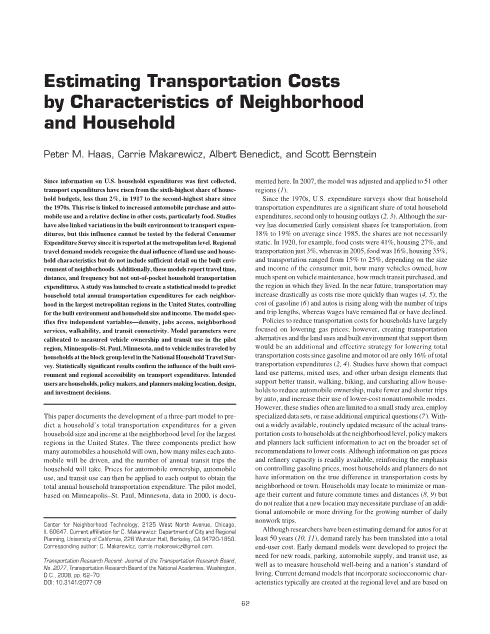Since information on U. S. household expenditures was first collected, transport expenditures have risen from the sixth-highest share of household budgets, less than 2%, in 1917 to the second-highest share since the 1970s. This rise is linked to increased automobile purchase and automobile use and a relative decline in other costs, particularly food. Studies have also linked variations in the built environment to transport expenditures, but this influence cannot be tested by the federal Consumer Expenditure Survey since it is reported at the metropolitan level. Regional travel demand models recognize the dual influence of land use and household characteristics but do not include sufficient detail on the built environment of neighborhoods. Published in Transportation Research Record: Journal of the Transportation Research Board.
-
Who We Are
About CNT
Center for Neighborhood Technology is a leader in promoting more livable and sustainable urban communities.
-
What We Do
We make cities work better
CNT delivers innovative analysis and solutions that support community-based organizations and local governments to create neighborhoods that are equitable, sustainable, and resilient.

“CNT was able to help us reach new community organizations and do our work better.”
~ Erin Aleman, Chicago Metropolitan Agency for Planning
-
Our Work
Project Spotlight
Accountability Framework: new ways to measure community-government collaboration
What are the best ways to track success when community residents and organizations consult with government agencies? -
Publications
Recent Publications
-
Stories
Latest PostsNovember 20, 2025October 25, 2025August 24, 2025




 Strengthening Transit Through Community Partnerships
Strengthening Transit Through Community Partnerships